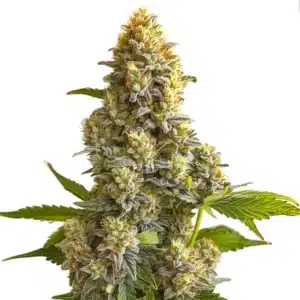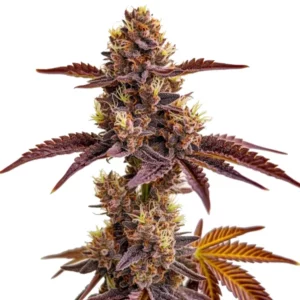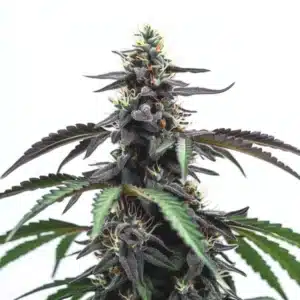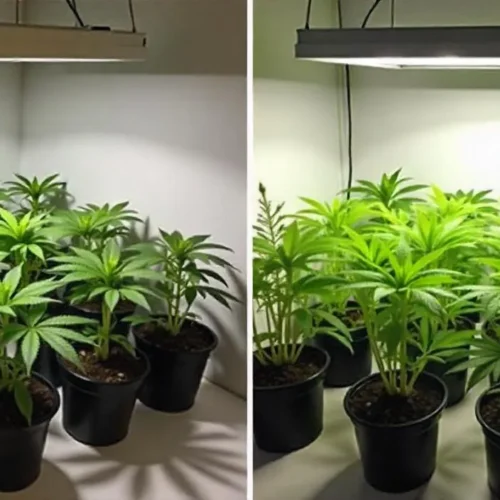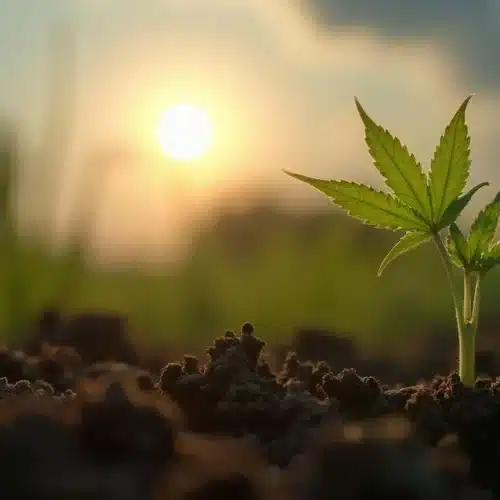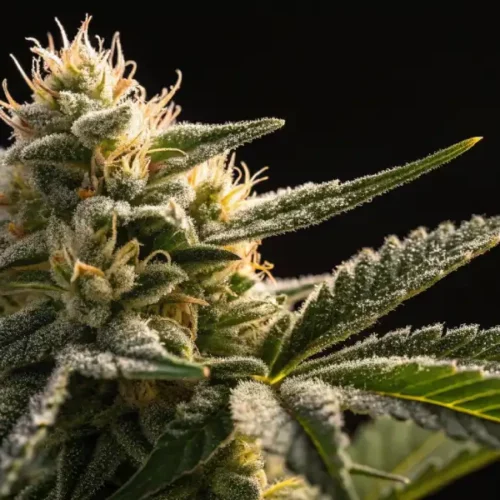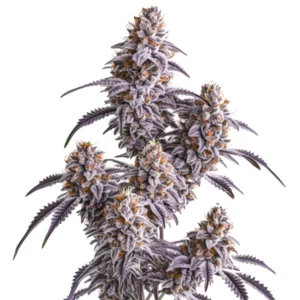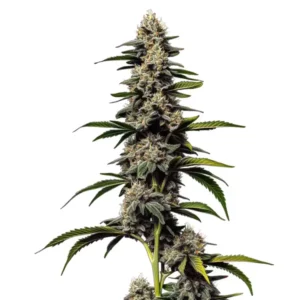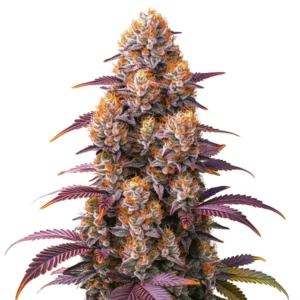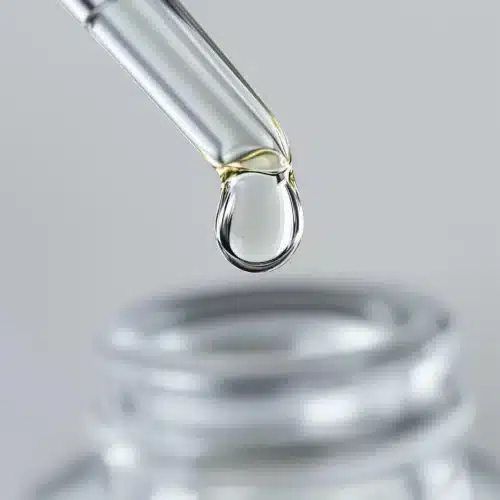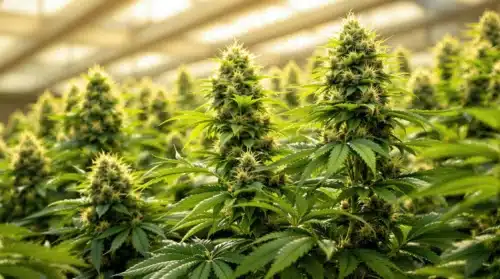Light Needs During the Cloning Phase
For anyone working with cannabis clones, the light schedule is a pivotal aspect of growth. Clones are delicate, needing a unique balance of light to thrive and avoid stress. During the early stages, cannabis clones require a gentle, indirect light source that promotes rooting without the high intensity needed for mature plants. Setting the correct cannabis clone light schedule becomes critical. New growers often overlook the impact of light on early growth stages, resulting in underdeveloped roots and weaker plants.
Ideal lighting for clones generally falls in the range of 100–200 μmol/m²/s of PPFD (Photosynthetic Photon Flux Density). With this level of light, clones receive enough energy to encourage root growth without overwhelming them. Setting up this cannabis clone light schedule ensures clones avoid stress while building a solid foundation for growth. Achieving the right balance is key, and even minor tweaks can make a significant difference in clone health and growth rates.
Recommended Hours of Light and Darkness for Clones
Clones thrive best under 18–24 hours of light per day. This light schedule aligns with their natural growth needs, providing clones with a stress-free environment to establish roots. The 18/6 schedule, with 18 hours of light and 6 hours of darkness, offers clones the energy needed without overloading them. Alternatively, some growers prefer a 24-hour light schedule, which provides continuous energy but requires precise control over light intensity to avoid overstimulation.
The difference between these schedules is subtle, and choosing one largely depends on grower preference and setup. For new growers, the 18/6 schedule is generally more forgiving, offering clones a rest period in darkness, which can support consistent root growth. Continuous light schedules are effective for advanced setups, allowing experienced growers to maximize clone growth while avoiding excessive light stress.
Adjusting Light Schedules Based on Clone Age
As clones transition from the initial rooting stage to early vegetative growth, light intensity and schedules should gradually shift. Young clones are sensitive to high-intensity light, so initially, it’s crucial to keep lights at a safe distance. After the first 7–10 days, as clones begin to root and develop, consider increasing light intensity slightly or lowering the distance between the light and the canopy. This slight adjustment in the cannabis clone light schedule helps strengthen the clones as they prepare for full vegetative growth.
Monitoring your clones and adjusting light based on visible health signs is essential. By week two, most healthy clones can handle a moderate increase in light, pushing them closer to the robust vegetative growth stage. Adjustments like these ensure each clone grows at a healthy, steady pace, maximizing potential yields without compromising plant quality.
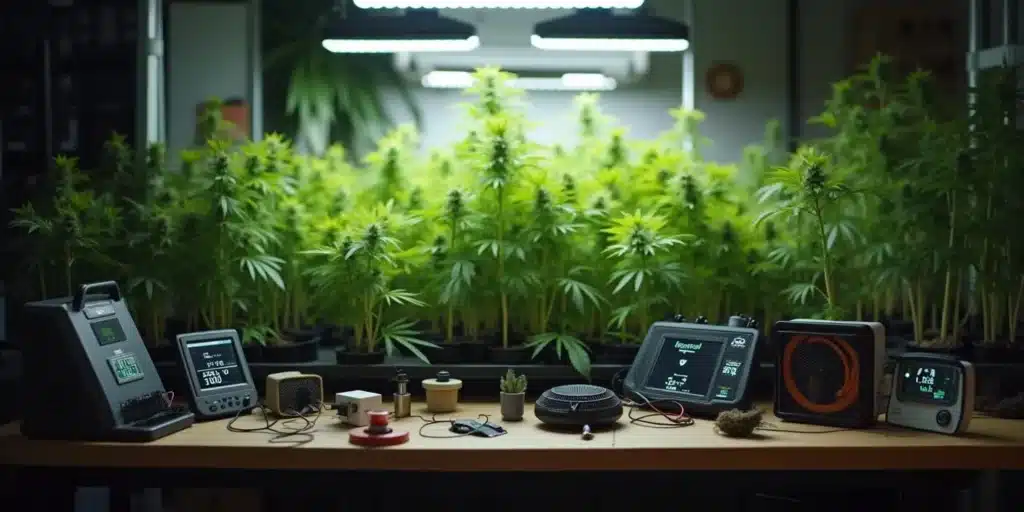
Promos & Deals
Importance of Light Quality for Clone Success
Choosing the Right Light Spectrum for Cannabis Clones
Light quality matters as much as the light schedule itself. Cannabis clones benefit from a full-spectrum light that mimics natural sunlight but leans towards cooler, blue wavelengths. Blue light promotes leaf and root growth, essential in the early stages. By using full-spectrum LEDs or fluorescent grow lights, growers can provide clones with a balanced spectrum that encourages steady development without overwhelming young plants.
A full-spectrum light source also ensures clones grow evenly, reducing the risk of weak or leggy growth often seen under low-quality lights. A well-structured cannabis clone light schedule combined with quality light sources contributes significantly to the overall health and resilience of clones as they mature.
How Light Duration Impacts Root Development
For clones, light duration directly affects root development. Inadequate light can hinder rooting, while excessive light may strain young plants. Keeping light exposure consistent encourages clones to form strong, dense root systems, which support robust growth in later stages. A consistent 18/6 or 24-hour light schedule paired with the correct intensity ensures roots develop without disruption.
A healthy root system allows clones to better absorb nutrients and water, setting them up for successful vegetative growth. Growers who monitor light exposure closely often see better results, as roots respond to stable light conditions by growing faster and stronger. Optimizing the light duration helps clones achieve their growth potential, especially during those critical first weeks.
Light Intensity in Healthy Cloning
In clone cultivation, light intensity should remain lower than in later growth phases. The recommended PPFD level for clones, between 100–200 μmol/m²/s, is generally less intense than what mature plants require. This lower intensity provides clones with the energy needed to grow without overwhelming them. Monitoring light intensity and adjusting based on clone response is essential to maintain this balance.
Excessively high light intensity can lead to stress and slow growth, while insufficient light may stunt root development. Investing in adjustable lighting and a reliable light meter ensures you can make precise changes to maintain an optimal environment for your cannabis clones. Over time, consistent light management supports clones as they transition from fragile cuttings to vigorous young plants.
Adjusting Light Schedules for Different Clone Environments
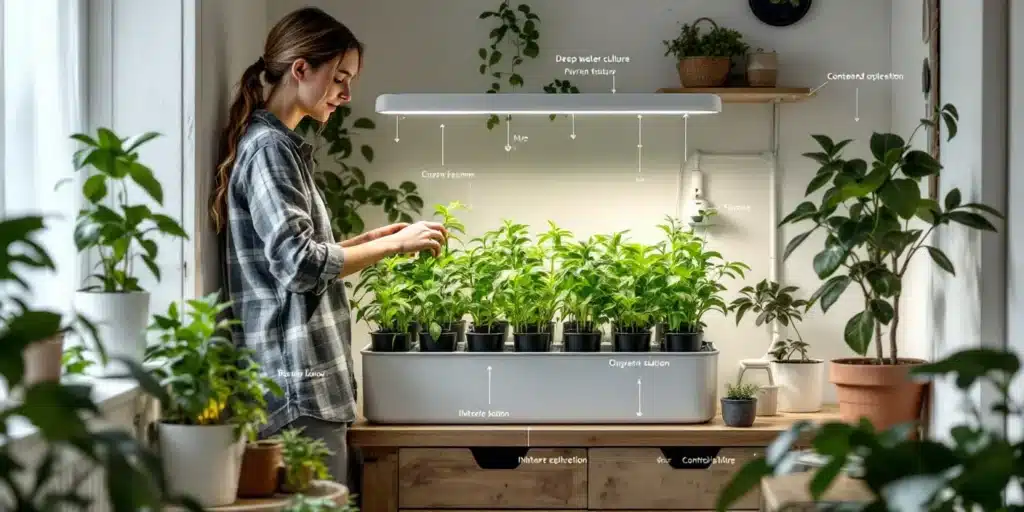
Indoor vs. Outdoor Light Schedules for Clones
Growing clones indoors offers full control over the light schedule, making it easier to manage the 18/6 or 24-hour schedules ideal for clones. Outdoors, however, growers must consider seasonal daylight fluctuations and the natural photoperiod. In summer, clones receive ample natural light, aligning well with their needs. But as daylight decreases, outdoor growers may supplement natural light to maintain optimal growth conditions.
Using grow lights in outdoor greenhouses can help balance light availability, ensuring clones still receive the necessary hours of light. Transitioning clones from an indoor to an outdoor environment may require gradual light adjustments to prevent shock, especially if natural daylight is less than the preferred 18 hours.
Best Light Schedule Practices for Indoor Cloning Setups
In indoor setups, the light schedule is simpler to manage, and using automated timers can maintain precise lighting conditions. This is part of the best cannabis cloning setup, where growers using LED or fluorescent lights should position lights around 12–18 inches above clones, adjusting as needed based on growth. Setting a timer for 18 hours of light creates a seamless cycle that supports clone development.
Automation also allows for minor adjustments as clones grow, ensuring they always receive consistent lighting. By refining the light schedule, growers can maximize clone quality, especially in controlled environments like grow tents or greenhouses where environmental factors are stable. Automated light schedules simplify the process, creating an ideal growing environment for healthy clones.
Seasonal Adjustments for Outdoor Cannabis Clones
For outdoor cloning, seasonality plays a critical role. Clones planted in spring and summer enjoy longer natural daylight hours, supporting steady growth. However, in fall, daylight naturally decreases, and clones may need supplemental light to maintain optimal growth schedules. Supplementing outdoor light with portable grow lights extends daylight exposure, helping clones grow robustly in environments where natural light is less predictable.
Monitoring light exposure as seasons change ensures clones receive adequate light. Outdoor growers who adjust light exposure based on seasonal shifts often find their clones are healthier and more resilient, even when daylight fluctuates. By adapting light schedules to match seasonal daylight patterns, growers set clones up for a smooth transition into the vegetative phase.

Tips for Effective Clone Light Schedule Management
Balancing Light and Darkness to Avoid Clone Stress
The balance between light and darkness plays a critical role in maintaining healthy cannabis clones. While clones benefit from 18 hours of light for optimal growth, the darkness period in an 18/6 light schedule provides clones with essential rest. This rest period prevents stress and mimics the natural day-night cycle, helping clones grow strong and resilient. Avoiding light overstimulation ensures clones develop without burning out, resulting in a smooth transition to vegetative growth.
Monitoring for signs of light stress, like leaf curling or discoloration, is essential. When these signs appear, consider adjusting the distance between the light and clones or reducing light intensity. Striking the right balance helps clones establish themselves, making future growth phases more productive and less prone to stress-related issues.
Using Timers for Consistent Light Exposure
Timers simplify the process of managing light schedules, ensuring clones receive consistent exposure without manual adjustments. Automated timers allow growers to set a precise 18/6 or 24-hour light schedule, keeping clones on a stable routine. This consistency enhances root development and growth by removing the variability that comes with manual control.
Timers also offer flexibility to make small adjustments as clones mature, supporting gradual increases in light exposure if needed. Setting up a timer allows growers to focus on other aspects of clone care, knowing that lighting remains perfectly consistent. For indoor setups, a timer can be a game-changer, helping clones establish roots and grow evenly with no interruptions in their light cycle.
Monitoring Light Effects on Clones Over Time
Observing how clones respond to light over time is key to refining the cannabis clone light schedule. Checking for steady growth, vibrant leaf color, and healthy rooting gives insight into whether clones are receiving adequate light. Healthy clones typically show uniform growth and strong stems, indicating that light levels and schedules are well-suited to their needs.
Tracking changes in clone appearance and growth rate helps growers identify when adjustments are necessary. Increasing or decreasing light intensity, or even shifting from an 18/6 to a 24-hour schedule, can be essential for clones needing a boost or those appearing stressed. Regularly monitoring light effects enables timely adjustments, resulting in a more efficient cloning process and healthier plants.
Troubleshooting Light Schedule Issues in Clone Cultivation
Signs of Insufficient Light in Cannabis Clones
Cannabis clones exposed to insufficient light often exhibit signs like stretching, pale coloring, and slower growth. These signs are common when light intensity is too low or when clones aren’t receiving adequate hours of light each day. Stretching, in particular, indicates that clones are trying to reach for light, often resulting in weak stems and lower resilience. Ensuring clones receive an optimal light schedule, such as 18 hours of quality light, prevents these issues and supports robust development.
To counteract light deficiency, gradually increase light intensity or lower the light source closer to the clones. Observing clone reactions to these changes helps avoid overstimulation. Boosting light levels to a suitable range quickly resolves most issues related to insufficient light, keeping clones on track for successful growth.
Recognizing and Fixing Light Burn in Clones
Light burn, resulting from excessive light exposure, causes symptoms such as yellowing or bleaching at the tips of leaves. This condition often arises when lights are too close to clones or if light intensity is too high. In indoor setups, high-intensity grow lights placed too close to clones can quickly lead to this issue, stalling clone growth and damaging leaf tissue.
To address light burn, increase the distance between the light source and clones or lower the light intensity temporarily. Allow clones time to recover, watching for improvements in color and growth over the following days. Addressing light burn promptly ensures clones remain healthy and continue growing strong. By making these small adjustments, you maintain the balance needed for thriving clones.
Fine-Tuning Light Schedules for Optimal Growth
Fine-tuning the light schedule for clones is often necessary to maintain optimal growth conditions. Growers can experiment with slight increases in light intensity or adjust the light cycle from an 18/6 to a 24-hour schedule based on clone response. For example, clones that appear sluggish in root development may benefit from extended light exposure, giving them an energy boost to stimulate growth.
Minor tweaks to light distance and intensity can also promote even development across all clones. By observing clone health and adjusting as needed, growers create a light schedule that maximizes growth potential. This level of control enhances clone quality and ensures consistent success, regardless of growth setup.
FAQs on Cannabis Clone Light Schedule
How Many Hours of Light Do Cannabis Clones Need Daily?
Cannabis clones typically thrive under an 18/6 light schedule, 18 hours of light followed by 6 hours of darkness. This schedule supports robust root growth and overall development, providing clones with the energy they need during this delicate phase. However, some growers opt for a 24-hour light cycle, especially during the early cloning phase, to promote faster root establishment.
Can I Use a 24-Hour Light Schedule for Clones?
Yes, a clones 24 hour light cycle is possible and can be effective in accelerating root development. Many growers find success using 24-hour light in the first few days after taking cuttings, as it provides continuous energy, boosting growth. However, prolonged 24-hour light exposure may not be suitable for all strains, and transitioning to an 18/6 schedule can help prevent stress while mimicking a natural day-night cycle.
What Type of Light Is Best for Cannabis Clones?
Full-spectrum LED lights with a balance of blue and red light are ideal for cannabis clones, as they promote healthy rooting and compact growth. Blue light, in particular, is beneficial during the cloning stage because it encourages vegetative growth without causing excessive stretching. Some growers use T5 fluorescent lights as well, which provide gentle, even light that is clone-friendly and easy to manage in terms of intensity.
How Close Should Grow Lights Be to Clones?
The distance between grow lights and clones depends on light intensity and type. LED lights are generally placed 18–24 inches away, while fluorescent lights can be closer, around 6–12 inches. Adjusting this distance based on clone response is essential to prevent light burn while ensuring clones receive adequate energy.
Can Changing the Light Schedule Stress My Clones?
Frequent changes in light schedules can stress clones, especially during their early stages when they are establishing roots. It’s best to stick to one schedule, such as 18/6 or 24 hours of light, until clones have rooted well. Once established, minor adjustments to light exposure should be done gradually to allow clones to acclimate smoothly.
How Do I Know If My Clones Are Getting Too Much Light?
Signs of excessive light in cannabis clones include leaf bleaching, yellowing, and curling. These symptoms often indicate that light intensity is too high or lights are placed too close to the clones. If you notice these signs, adjust the light distance or lower the intensity to prevent further damage.


